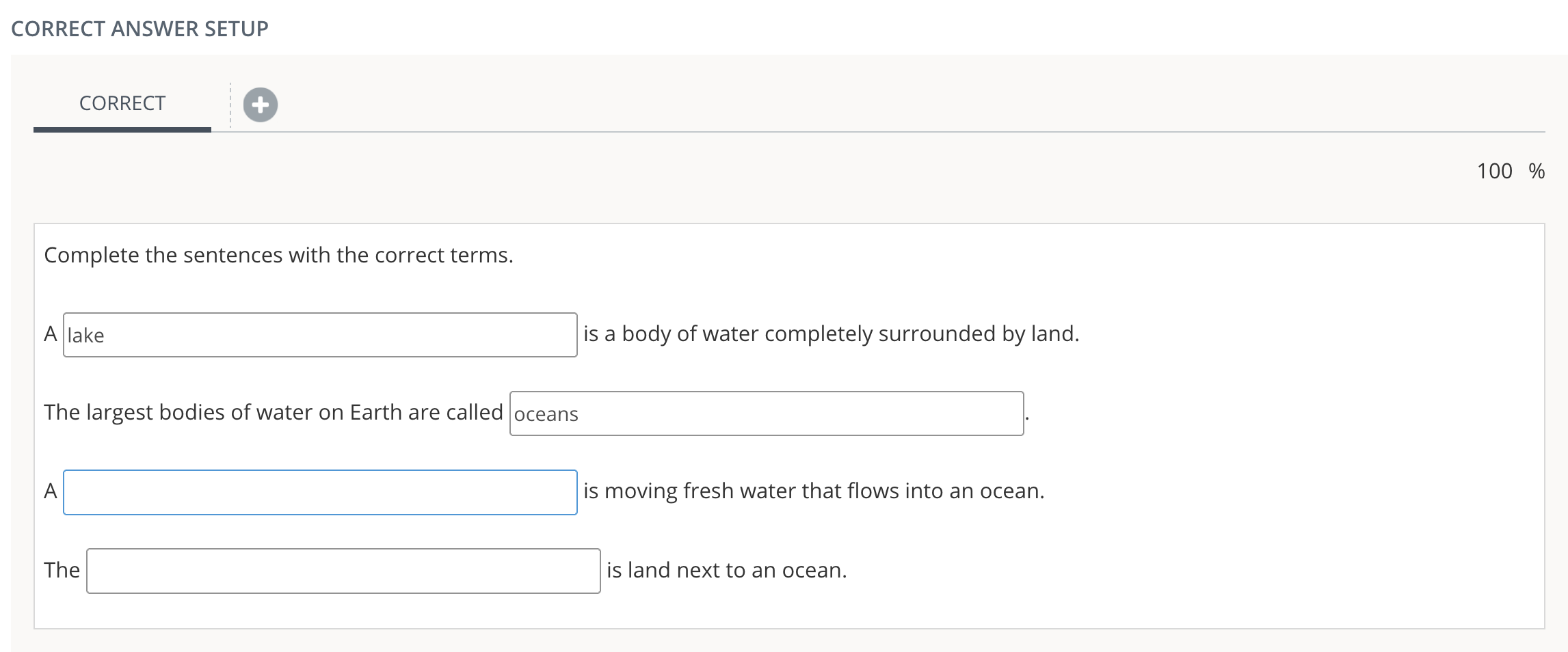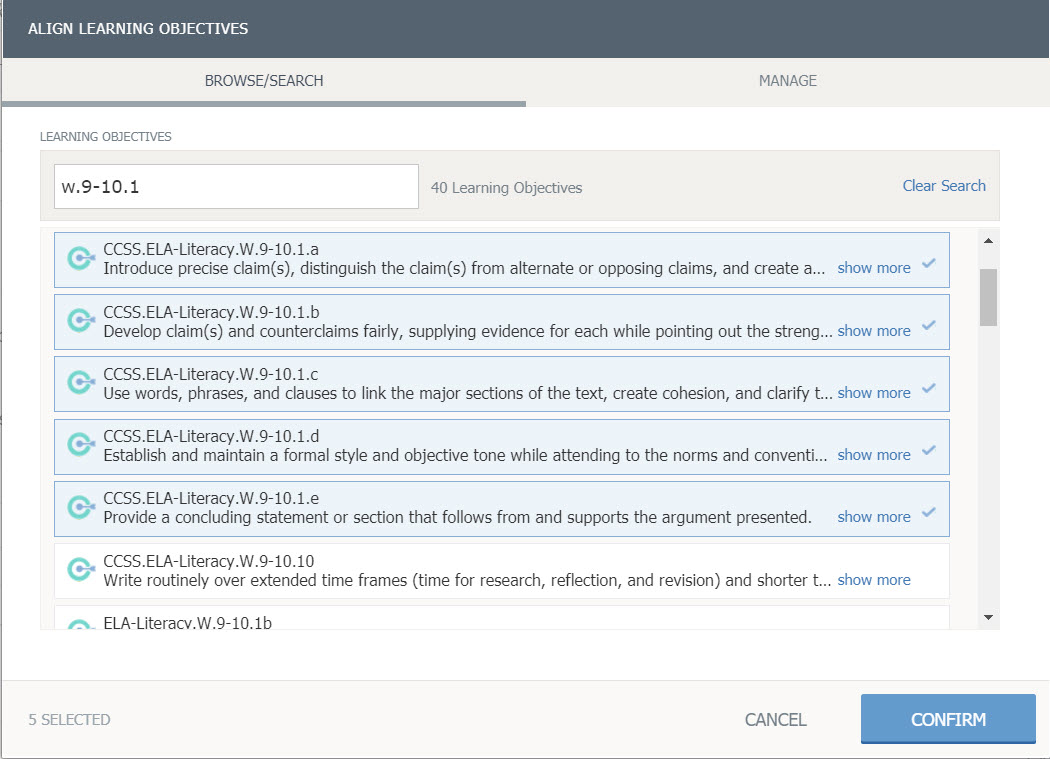Fill in the Blank Text: Standard Question Type
Use the Fill in the Blank Text question type to enable students to write responses in empty text fields in a question.
Question Set Up
Enter your question into the Question Setup field.

Use the Rich Text Editor, which appears when you click into the field, to apply formatting such as bold and italics, or to insert images or tables. Hover your mouse over the individual icons to view the tooltip explaining the function of each button.

To generate a blank when creating this type of question, type an underscore (_) into the text field or click the Insert Response button in the stimulus toolbar. Each underscore corresponds to an answer blank under Correct Answer Setup. Add additional underscores to add multiple blanks in the question.
Correct Answer Setup
Enter the correct term into the blank cell(s) in Correct Answer Setup.

Click the + button at the top of Correct Answer Setup to enable an additional set of acceptable responses to the blanks in the question.
Click into the percentage field to the right of the additional answer to determine whether the alternate answer is worth partial credit and to set the percentage of possible points students can receive for this answer accordingly.

Set a Maximum Length (characters). Decreasing the maximum character length will also shorten the length of the input boxes (default is 40 characters).
Enable Case Sensitive to consider capitalization during scoring.
If your question has more than one blank, choose your Scoring Type for the question after you have entered the correct responses to each blank.
Select Exact Match to require that the student responds to all blanks correctly. This option allocates 100 percent of the possible points for correctly responding to each blank, and zero points if the student responds to one or more blank(s) incorrectly.
Partial Credit
Select Partial Match to award points relative to the number of blanks the student responds to correctly.
If the Scoring Type is set to Partial Match, the formula for scoring the question is:
(Value of the percentage field / # blanks) * (# correct responses) = Partial Match Value
The Partial Match Value does not represent how many points the response will receive, but the percentage of the total possible points.
The value of the percentage field is always taken from the Correct tab setup (100%), rather than from any of the Alternate correct answer options.
For example: If there are four blanks, and a student enters three correct responses and one incorrect response, the value produced by the formula would be 75. (100 percent / 4 blanks) * (3 correctly entered responses) = 75(%). If the question is worth 10 points, the student would receive 7.5 points, because 75% of 10 is 7.5. To penalize the student for the incorrect response, see Penalty Score below.
Penalty Score
When the question is set to Partial Match, you can optionally set a Penalty Score to deduct a percentage of the total question point value for each incorrectly matched answer. To simply award points for correct answers without additional deductions for incorrect answers, set the Penalty Score to 0. To weigh incorrect responses the same as correct responses, set the Penalty Score to 100.
The formula for scoring a question with a Penalty Score is:
[Partial Match Value] - [(Value in Penalty field / # blanks) * (# incorrect responses)]
The Penalty formula, like the Partial Match formula, produces a relative percentage, not a point value.
The penalty value divided by total number of blanks is the penalty per answer in percentage form.
If you were to take the previous example and add a Penalty Score of 20, the value produced by the penalty would be 70(%). 75 - [(20 / 4 blanks) * (1 incorrect response)] = 70(%). Again, if the question is worth 10 points, the student would receive 70% of 10, which is 7.
Author Notes
Enter Author Notes to explain why certain choices are incorrect, or why you chose to allocate a certain percentage of possible points to alternate answers. If you have edit access to a question, you will see this field. This information will not display to students.
Align Learning Objectives
Click Learning Objectives to open the Learning Objectives browser window.
Click Browse/Search to find and add specific objectives.


Click Manage for objectives already aligned to the question.

Click Confirm to save the learning objectives.
Preview and Edit Question
To see how the question will appear to a student taking it in an assessment, click Preview Question.
To exit the preview screen and return to the question editor, click Edit Question.

Once you are finished editing the question, click Save.
